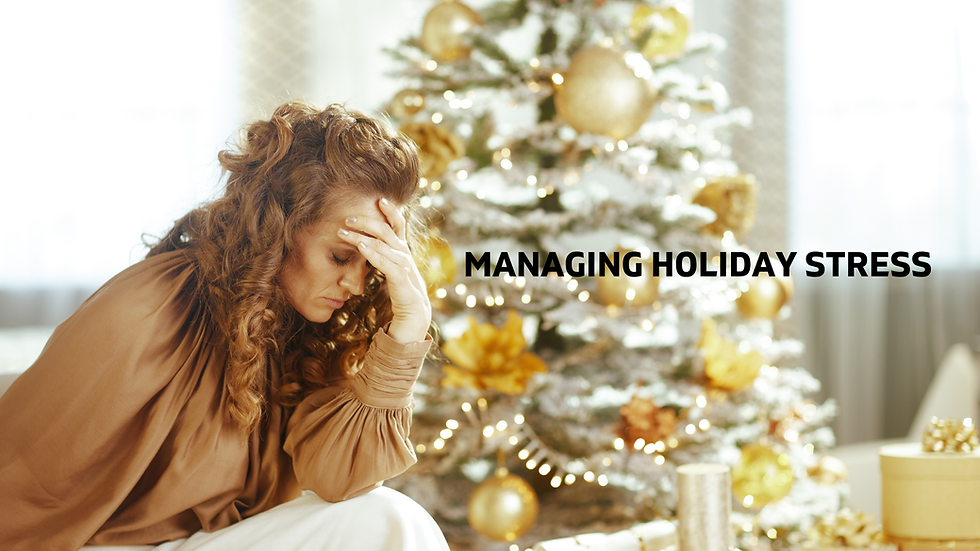Which forms of exercise can relieve the pain of arthritis?
- Dr. Eric Carlsen
- Jul 19, 2022
- 3 min read

Aches and pains can convince us that our joints need a rest, but often the opposite is true. There are many ways that swelling, stiff joints, and tiredness can be alleviated by even gentle exercise. In a 2017 study, researchers found that chronic pain sufferers experienced a better quality of life as well as less joint pain when they participated in physical activity. Rather than give up on exercise when you’ve received an arthritis diagnosis, you can use it as motivation to get into better shape.
Swimming
Swimming is an aerobic exercise that’s also low-impact and capable of improving your cardiovascular health. The water supports about 90% of your body weight, so it can be easier to overcome the pain of aching joints. Regular swimming will begin to tone the muscles that support your joints and ensure you can maintain your normal level of strength. In this way, it can minimize the risk of arthritis worsening and may even hold off the onset. Some people find swimming rather monotonous, so if you do get bored with swimming lengths, think about joining an aqua-aerobics or aqua-jogging class.
Strength training
Strength training is an excellent idea for people living with arthritis because it promotes stronger muscles and eases the strain on your joints. The muscles and ligaments around each joint are needed for stability and support. The better the shape they are in, the less pressure is placed on painful joints. Getting a good grip on weights can be an issue, but using copper-fit gloves can ease swelling, improve mobility, and help you get stronger. Once in place, they apply a small amount of pressure to the hands, relieving stiffness and stimulating blood flow to the joints.
Simple Stretches
From creaky wrists to aching knees and a stiff back, the various pains caused by arthritis can be alleviated with gentle stretching. An excellent choice for people who are new to working out, these range-of-motion movements can cause mild feelings of tension but no real pain. Between eight and ten arm raises, neck tilts and side-bends can be attempted daily on both sides of your body. Of course, if you have a joint that is too painful, don’t include it in your stretches.
Gardening
We tend to associate gardening with lots of bending and kneeling, which could be very off-putting to people with hip and knee pain. However, there are shortcuts that you can try out if you enjoy spending time in your garden but want to continue your hobby without pain. Stooping is difficult for many people living with arthritis, but you could have a couple of raised beds installed along with window boxes, so no bending is required. Take it slowly, and this gentle, relaxing form of exercise will soon help to strengthen your arm and hand muscles, as well as to improve your posture.
Tai Chi
Tai Chi is taught in a slow, calm style that makes it ideal for anyone who prefers low-impact exercise. Much like yoga, the flowing movements are combined with moments of meditation and gentle poses that enhance flexibility. Although it originated as a martial art, this famously peaceful workout can help you manage pain because it encourages you to relax and focus on your balance. In a class aimed specifically at people dealing with arthritis, any high-risk moves will be left out, and there will be a broader range of exercises aimed at healing.
Walking
Walking is an excellent stress buster and can also aid weight loss, as well as being gentle on sore legs. Going out for a twenty-minute stroll three or four times a week can help, but if you can do more while remaining comfortable, that’s even better. Despite being a low-impact exercise, walking will encourage blood flow to your cartilage. This enriches the cartilage with nutrients, allowing it to provide a better cushion for the bones that make up your joints. One of the best things about walking is that it won’t cost you anything and you don’t need to book a class to get started.
Where to begin with a new exercise plan?
Regular exercise can ease the pain of arthritis, but it can be challenging to get going with a plan that suits you. In the early stages, it’s worth thinking about where your pain occurs and what your current level of fitness is, before having a chat with your doctor and choosing an appropriate activity to get you moving.
Credit: Alternative Medicine Magazine




Comments